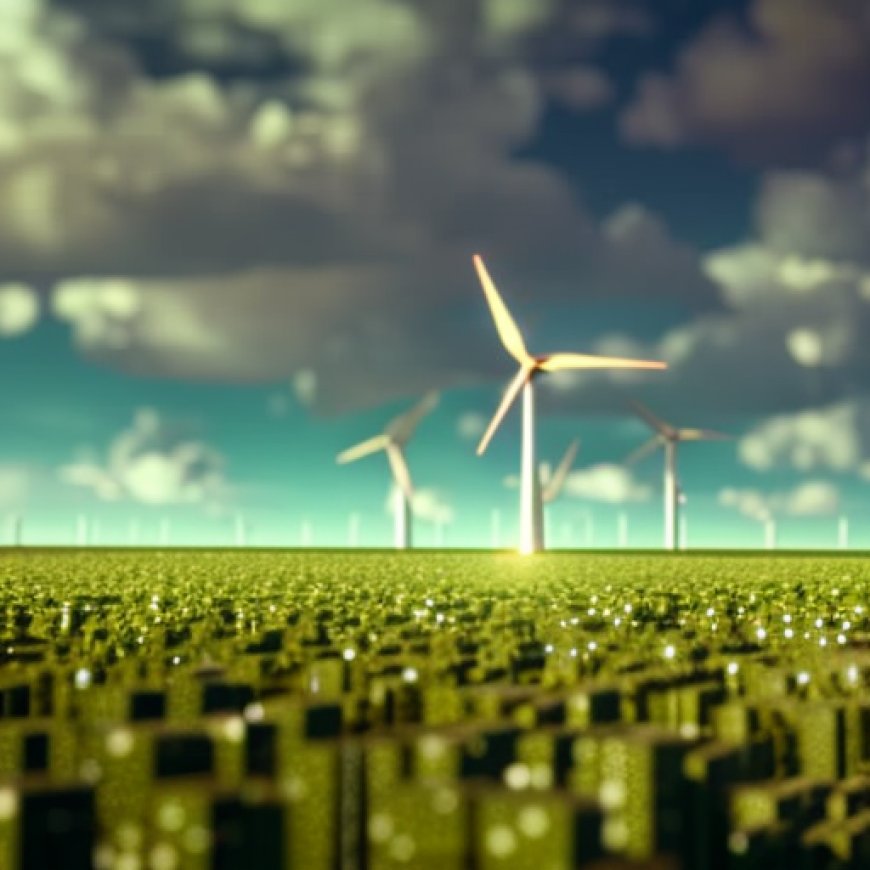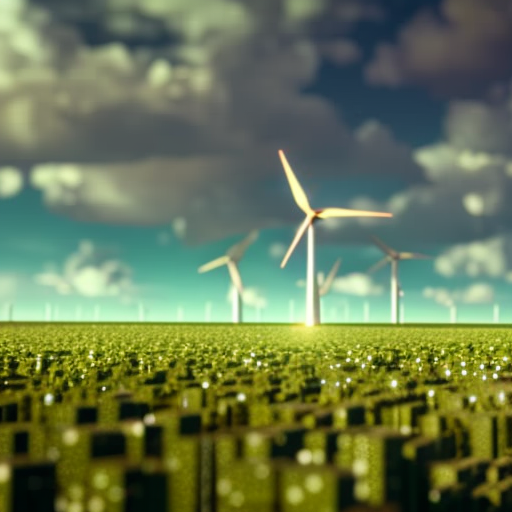Integrating renewables and machine learning for improved grid stability
Integrating renewables and machine learning for improved grid stability EurekAlert


Innovative Solution for Integrating Renewable Energy Sources into Power Grids
image:
Xingpeng Li, assistant professor of electrical and computer engineering at the University of Houston.
Credit: Please give photo credit to University of Houston.
In the race to achieve a net-zero future based on clean energy, renewable energy sources like solar and wind power have emerged as potential champions in the battle against climate change. However, as traditional synchronous generators are replaced by inverter-based renewable energy resources, the transition creates a low-inertia challenge within the existing power grids leading to stability and reliability concerns.
Xingpeng Li, assistant professor of electrical and computer engineering at the University of Houston, is working on a solution that will allow seamless integration of renewable energy sources with the rest of the power grid without causing any problems. He received a National Science Foundation CAREER Award for his proposal “Frequency-Constrained Energy Scheduling for Renewable-Dominated Low-Inertia Power Systems.” The goal of the project is to ensure that evolving power systems can continue to operate efficiently and stably while supporting fast-growing wind and solar generation.
Challenges in Integrating Renewable Energy Sources
Inertia is the total kinetic energy stored in the heavy rotating synchronous generators, which is necessary for ensuring system stability including frequency stability during large disturbances.
“For example, when the grid experiences sudden large generation losses or increased electrical loads, the stored kinetic energy immediately converted to electrical energy and addressed the temporary shortfall in generation,” Li explained.
“However, as the proportion of wind and solar power increases in the grid, we want to maximize their use since their marginal costs are zero and they provide clean energy,” he added. “Since we reduce the use of those traditional generators, we also reduce the power system inertia substantially.”
Seamless Integration through Machine Learning
Li and his research team will use machine learning to create more efficient and less complicated dynamic performance models and then integrate these models into the day-ahead scheduling application used by grid operators to schedule all the generating resources for the next operating day.
“By merging the machine learning model with the optimization model for scheduling in this new framework, we can not only ensure efficient operations, but also ensure grid stability,” he said. “With the proposed new modeling and computational approaches, we can better manage grid and ensure it can supply continuous quality power to all the consumers.”
Engaging Future Generations and Creating Open-Source Tools
Li also wants to inspire and engage future generations – specifically K-12 and college students, including those in graduate programs.
His team will also create a free open-source tool for the larger research community to provide benchmarking capabilities. It will have an easy-to-understand graphical user interface to explain power engineering to K-12 students and encourage them to consider power industry careers down the road.
Additionally, the researchers are developing a new course called “Applied Machine Learning in Power Systems,” or “AppML” for short, to help teach advanced concepts.
“Machine learning technologies are becoming much more popular in power systems as they help improve various power system applications. As the demand for machine learning expertise grows, it is essential for students and engineers to gain knowledge and skills in ML,” Li said. “However, there are not many courses nationwide that combine ML and power systems. This new course will address this workforce need.”
Recognition and Research Background
Earlier this year, the National Academies of Sciences, Engineering and Medicine’s Gulf Research Program selected Li as an Early-Career Research Fellow in the Offshore Energy Safety Track. The early-career award is not attached to a specific project, which allows fellows to take on research they might not otherwise be able to pursue.
Li’s research interests include planning and operations of various power energy systems including bulk power grids and microgrids. He leads the Renewable Power Grid (RPG) Lab at UH. He is also the Associate Director of the Power Electronics, Microgrids & Subsea Electrical Systems Center (PEMSEC) at UH.
His lab focuses on energy security, transition and transmission for both onshore and offshore energy systems. With a goal to promote renewable energy-enriched future power grids, the group proposes new models and algorithms to improve the efficiency and security of energy systems. The lab’s work also contributes to net-zero energy systems by facilitating grid integration of renewables and green hydrogen.
Li has authored over 60 peer-reviewed papers and has been rapidly expanding his research over recent years. In 2019, he received Tier-1 and Tier-2 Silver awards from the U.S. Department of Energy’s Office of Electricity for two winning submissions to the Electricity Industry Technology and Practices Innovation Challenge prize competition. He was named an Emerging Leader by the Offshore Technology Conference and selected by the Georgia Tech SDGs, Targets, and Indicators Analysis
The article discusses the challenges and solutions related to the integration of renewable energy sources into power grids. This aligns with SDG 7, which aims to ensure access to affordable, reliable, sustainable, and modern energy for all. It also relates to SDG 9, which focuses on building resilient infrastructure, promoting inclusive and sustainable industrialization, and fostering innovation. Additionally, the transition to renewable energy is crucial for addressing climate change, making it relevant to SDG 13.
The article highlights the need to seamlessly integrate renewable energy sources into power grids. This aligns with SDG 7.2, which aims to increase the share of renewable energy in the global energy mix. The goal is to ensure that renewable energy sources like wind and solar power can be efficiently integrated into existing power systems without causing stability and reliability concerns.
The article also emphasizes the importance of developing efficient and stable power systems to support fast-growing wind and solar generation. This relates to SDG 9.1, which focuses on developing quality, reliable, sustainable, and resilient infrastructure.
Furthermore, the transition to renewable energy is a crucial measure for addressing climate change, as mentioned in the article. This aligns with SDG 13.2, which emphasizes the integration of climate change measures into national policies, strategies, and planning.
The article does not explicitly mention specific indicators. However, progress towards the identified targets can be measured using the following indicators:
For SDG 7.2, the share of renewable energy in the total energy consumption can be used as an indicator. It measures the proportion of energy derived from renewable sources like wind and solar power.
For SDG 9.1, the number of infrastructure projects with sustainability considerations can be used as an indicator. It reflects the extent to which infrastructure development incorporates sustainability principles and practices.
For SDG 13.2, the adoption of national policies and plans that address climate change can be used as an indicator. It assesses the implementation of measures to mitigate and adapt to climate change at the national level.
1. Which SDGs are addressed or connected to the issues highlighted in the article?
2. What specific targets under those SDGs can be identified based on the article’s content?
3. Are there any indicators mentioned or implied in the article that can be used to measure progress towards the identified targets?
4. Table: SDGs, Targets, and Indicators
| SDGs | Targets | Indicators |
|---|---|---|
| SDG 7: Affordable and Clean Energy | Increase substantially the share of renewable energy in the global energy mix. | Share of renewable energy in the total energy consumption. |
| SDG 9: Industry, Innovation, and Infrastructure | Develop quality, reliable, sustainable, and resilient infrastructure. | Number of infrastructure projects with sustainability considerations. |
| SDG 13: Climate Action | Integrate climate change measures into national policies, strategies, and planning. | Adoption of national policies and plans that address climate change. |
The table summarizes the identified SDGs, their corresponding targets, and the specific indicators mentioned in the analysis.
Behold! This splendid article springs forth from the wellspring of knowledge, shaped by a wondrous proprietary AI technology that delved into a vast ocean of data, illuminating the path towards the Sustainable Development Goals. Remember that all rights are reserved by SDG Investors LLC, empowering us to champion progress together.
Source: eurekalert.org

Join us, as fellow seekers of change, on a transformative journey at https://sdgtalks.ai/welcome, where you can become a member and actively contribute to shaping a brighter future.







